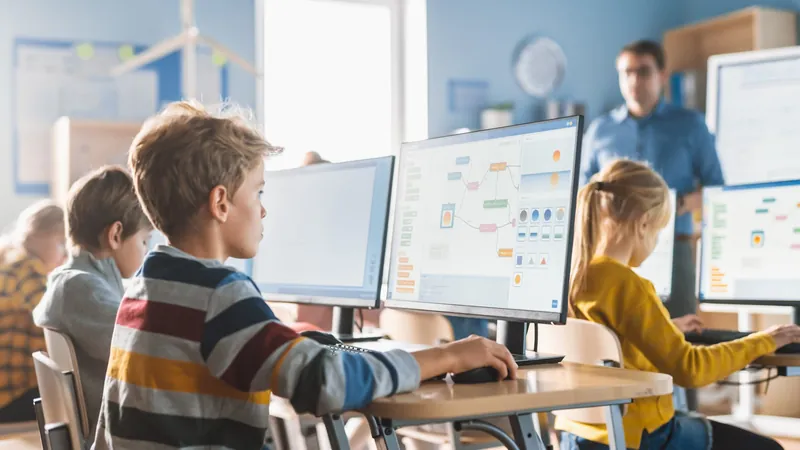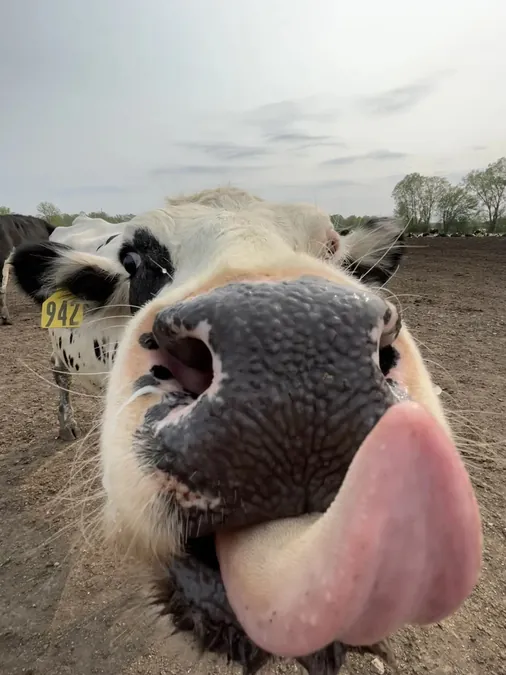
Unlocking Learning: How AI and Eye Tracking Are Set to Revolutionize Online Education for Kids
2025-09-15
Author: Emily
The Eye-Opening Potential of AI in Learning
Imagine if a child’s eyes could reveal the secrets of how they learn! Recent breakthroughs suggest that combining eye-tracking technology with artificial intelligence (AI) can do just that. Researchers are now uncovering the precise moments when children grasp new concepts while watching educational videos, paving the way for a revolutionary approach to online learning.
Tracking Young Minds in Real-Time
In an innovative study by Ohio State University, researchers immersed 197 children aged 4 to 8 in a four-minute video from popular YouTube channels like "SciShow Kids" and "Learn Bright," centered on the topic of animal camouflage. Before diving into the lesson, children’s baseline knowledge was assessed, and they were tested afterward to measure what they absorbed.
Equipped with high-precision eye trackers, the team recorded where and how long each child looked at the screen. Lead author Jason Coronel highlighted the significance of these eye movements, stating, "Tracking attention in real time is crucial for effective learning." This data fed into two AI neural networks, one typical and the other designed with a focus on how new information interacts with existing knowledge.
Unveiling Key Learning Moments
The AI analysis pinpointed seven critical moments in the video that greatly affected the children’s understanding. One standout moment occurred when the host invited viewers to spot her animated sidekick, Squeaks. This engaging cue led children who focused their attention to better grasp more complex concepts later.
Another pivotal moment was when the narrator defined camouflage while displaying the word visually, marking a crucial transition known as an "event boundary." Co-author Alex Bonus noted that these seven significant points closely aligned with natural breaks in the video.
The Science of Timing in Education
Education is more than just delivering information; it involves how the brain organizes that information over time. Coronel and his team emphasized this temporal aspect, arguing that seamless connections between old and new knowledge enhance comprehension.
The AI systems are designed to pick up on these crucial shifts in attention, which might help developers create videos that keep students engaged and enhance understanding by strategically placing content boundaries.
A New Era of Personalized Learning
Published in the Journal of Communication, this groundbreaking research arrives at a time when eye-tracking tools and AI are becoming more affordable and accessible. Unlike the past, where such technologies were confined to laboratories, they can now be integrated into classrooms and homes.
The researchers envision a future where AI can assess comprehension in real time, adapting educational content instantly for optimal learning. Picture a scenario where videos automatically adjust to include additional examples or change the teaching style when a learner struggles!
Looking Toward the Future of Education
Despite the promising insights, much remains to be discovered about the cognitive mechanisms at play during these key video moments. The Ohio State team aims to expand their research by integrating enhanced models and exploring longer, more diverse lessons.
The study marks a major leap into a future where real-time biological signals guide educational content delivery. With findings across nearly 200 children, it appears their eye movements may indeed be the key to unlocking effective learning strategies.
As Coronel wisely reflects, "Envision a world where eye tracking can detect confusion in a learner and AI adjusts the content instantly. This could revolutionize personalized, effective, and scalable instruction for students everywhere!"









 Brasil (PT)
Brasil (PT)
 Canada (EN)
Canada (EN)
 Chile (ES)
Chile (ES)
 Česko (CS)
Česko (CS)
 대한민국 (KO)
대한민국 (KO)
 España (ES)
España (ES)
 France (FR)
France (FR)
 Hong Kong (EN)
Hong Kong (EN)
 Italia (IT)
Italia (IT)
 日本 (JA)
日本 (JA)
 Magyarország (HU)
Magyarország (HU)
 Norge (NO)
Norge (NO)
 Polska (PL)
Polska (PL)
 Schweiz (DE)
Schweiz (DE)
 Singapore (EN)
Singapore (EN)
 Sverige (SV)
Sverige (SV)
 Suomi (FI)
Suomi (FI)
 Türkiye (TR)
Türkiye (TR)
 الإمارات العربية المتحدة (AR)
الإمارات العربية المتحدة (AR)